- This event has passed.
TYC Seminar: Theory and simulation of redox-reactivity at iron oxide/water interfaces – Kevin Rosso, PNNL
29 August 2024 @ 2:00 pm – 3:30 pm
The event is free to attend but registration is required: https://forms.office.com/e/0tPn5mX9BJ

Structure and dynamics at iron oxide/water interfaces, which govern rates of adsorption, electron transfer, growth/dissolution, have long been challenging to accurately simulate because of the prominent role of iron cation valence on acidity and ligand exchange behavior, and unique electronic structure considerations in the solid state. Iron oxides are wide band gap semiconductors with a narrow conduction band arising from strongly localized 3d orbitals. Consequently, charge carriers tend to self-trap as polarons whose mobilities are controlled by thermally activated site-to-site hopping. Proper theoretical description of such properties requires thoughtful trade-off’s between necessary accuracy versus efficiency.
I will provide a decadal perspective on computational efforts applied to processes at hematite/water interfaces, highlighting the importance of steady methodological improvements. The talk will feature 1) how water organizes and is dynamically stabilized at distinct hematite facets, 2) the structure and hopping kinetics of electron and hole polarons, and 3) the free energies of ferrous iron adsorption and valence interchange electron transfer with the surface. It will be shown that ab initio molecular dynamics is now both a viable and essential tool for accurately determining the H-bonding network of adsorbed water and the acidity constants of surface hydroxo groups, while static density functional theory is still a useful tool for water binding energetics. Gap-optimized hybrid functionals show that while the hole polaron generally localizes onto a single iron site, its mobility is limited by the tetragonal distortion it induces, whereas the electron polaron induces a smaller distortion resulting in delocalization over two neighboring Fe units and a factor of three higher mobility. Finally, for computationally intensive processes such as ferrous iron adsorption, it will be shown that use of neural network potentials such as the Behler-Parrinello type is a promising alternative to ab initio molecular dynamics, offering both the precision of first principles calculations and an acceleration of 3-4 orders of magnitude. The collective findings bode well for ultimately enabling a robust basis for interpretation of experimental observables near the atomic-scale including complex multi-step processes such as redox-catalyzed dissolution and growth.
Physical Sciences Division, Pacific Northwest National Laboratory, Richland, Washington, 99352, USA: kevin.rosso@pnnl.gov
For online participation join Zoom Meeting: https://ucl.zoom.us/j/92625764389, Meeting ID: 926 2576 4389
Organised by:
Amel Mazari
a.mazari@imperial.ac.uk
